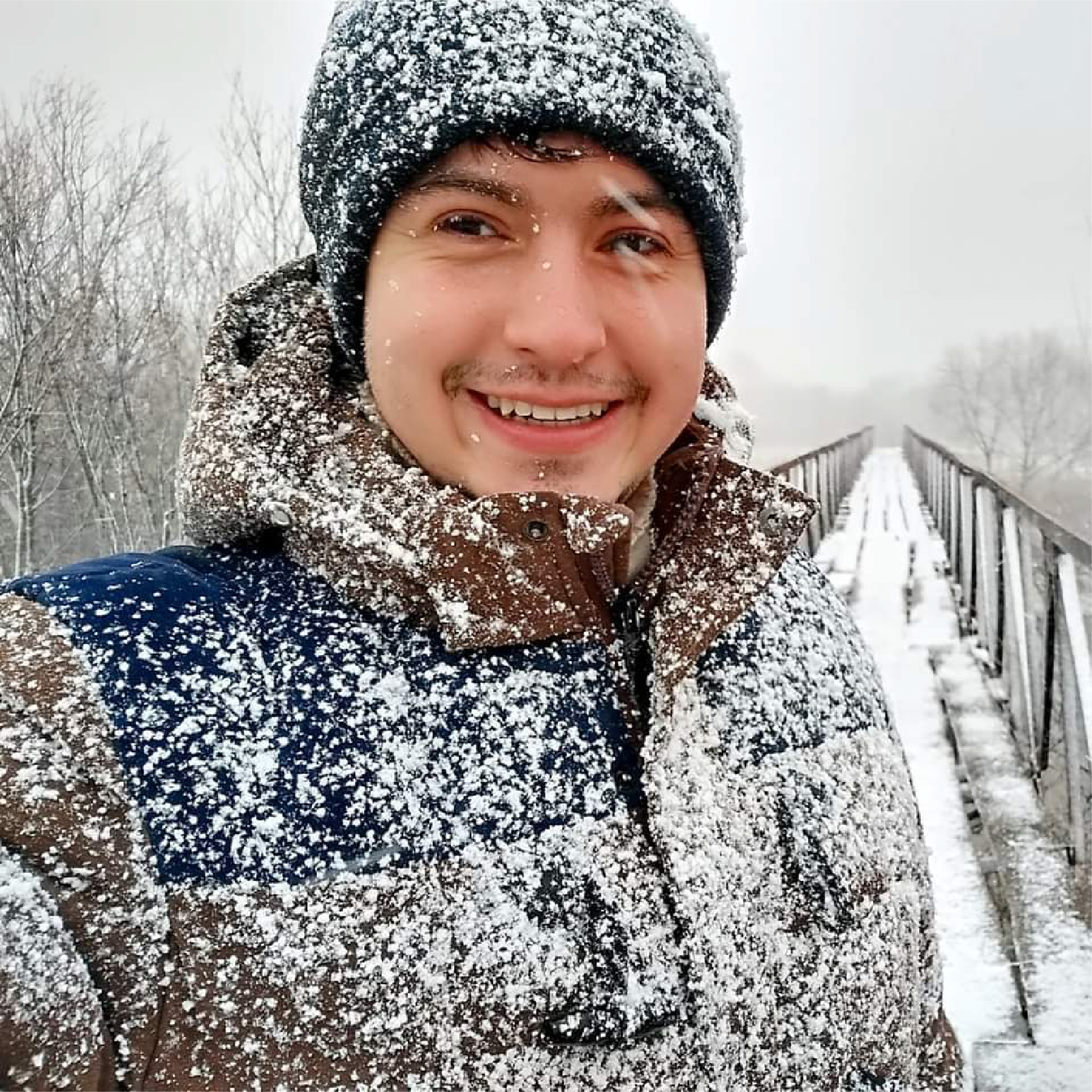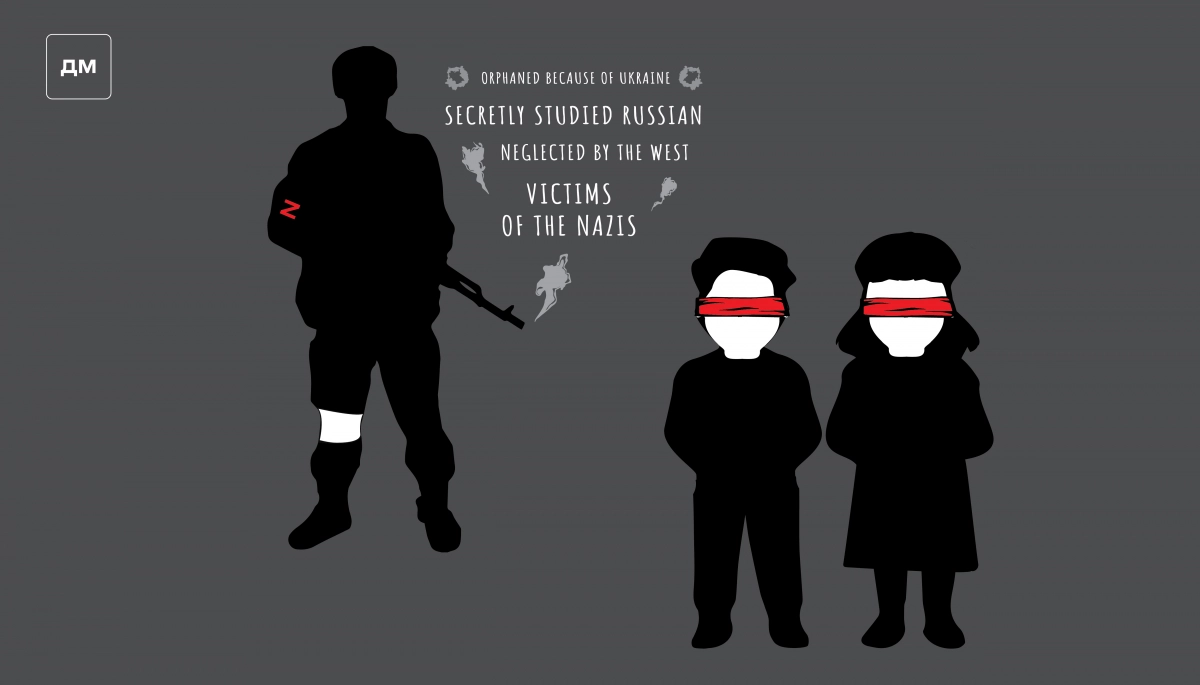

Russian propaganda exploits children from the occupied territories, using them as a justification for the aggression against Ukraine. We explain how the Russian propaganda machine devised the information background it used to justify its war crimes.
Up until February 2022, there were hardly any accounts of the forced abduction of children from the Ukrainian territories under Russian occupation reported in the media. However, since the outbreak of the full-scale invasion, these atrocities have been documented in the regions under Russian control. The Russian segment of Telegram and users of channels promoting the occupation have been bombarded with disinformation and manipulative narratives, ultimately culminating in the message that ‘the war is revenge for the children of the Donbas’.
Detector Media analysed almost nine thousand posts in the Russian segment of Telegram and in the occupation Telegram channels to determine how Russian propaganda geared up for the deportation of Ukrainian children to Russia. Analysts identified the main methods used by Russians and collaborationists to justify the forced deportation of children from Ukraine and found out how they use children from the occupied territories to increase support for aggression against Ukraine.
Why children?
One of the most well-known fabricated stories of the Russian-Ukrainian war is that of the ‘crucified boy in his underwear’. It has become a quintessential example of Russian propaganda and the absurdity of Kremlin disinformation. Following this, Russia persisted in spreading other false narratives about supposed murders, rapes, and the burning of children by so-called ‘Ukrainian Nazis.’ These did not gain as much recognition, and the number of such stories has significantly decreased in the Ukrainian media. However, they continue to circulate in the occupied territories and in Russia. Propagandists continue to use children’s stories, drawings and photographs of the war in Donbas, implying that it is against them that the Ukrainians are allegedly fighting.
Manipulations using personalised ‘stories’ have a more powerful impact than generalised statements without specific details. The use of children as ‘protagonists’ only increases this effect. By manipulating sensitive topics, it is easier to stir the emotions of the audience, and accordingly, it becomes easier for propagandists to promote the desired messages and narratives.
The modus operandi of the Russian propaganda machine is to exacerbate divisions and pit Russia against all others, be it Ukraine, Europe, the United States, the ‘collective West’ or the ‘Anglo-Saxons’. This forms the foundation of the concept of the so-called ‘Russian world’, where Russia is portrayed as the ‘champion against evil’. Disinformation targeting vulnerable groups follows a similar pattern: on the one hand, they highlight the ‘suffering and fears’ of a certain group of people, while on the other hand, they accuse them of being ‘culpable’ and ‘complicit’.
Who are the ‘children of the Donbas’?
Since the beginning of the full-scale Russian invasion, the topic of protection of children from the occupied territories has been known as the propaganda cliche ‘children of the Donbas’, whom Ukraine has allegedly been killing since 2014. The use of this label on social media allowed the Russians and their supporters to shield themselves from any arguments that Russia’s aggression against Ukraine is merely a result of its desire to expand its borders.
According to Russian propaganda, the aggressor is not Russia but Ukraine. This message also fits the claim that Ukrainians are Nazi punishers who seek to destroy the so-called people of the Donbas. They tried to prove the ruthlessness of Ukraine through posts about the Ukrainian soldiers, who were allegedly ready to shoot children’s legs in Donbas. Also, the argument that ‘Ukraine has been killing the Donbas children for eight years’ was used to dampen the enthusiasm of all those in Russia who tried to emphasise that Ukraine is suffering from the Russian full-scale invasion. As ‘proof’ of Ukraine’s guilt, they pointed to the ‘Alley of Angels’, which was opened in occupied Donetsk, showing how many children have died ‘because of Ukraine’ since 2014. This alley was presented as ‘proof’ that ‘Ukraine must pay for its crimes’. In addition to shifting all the blame on the Ukrainian government, the ‘crimes’, this narrative also described the crimes.
How does propaganda explain the deportation of Ukrainian children to Russia?
‘We are being bombed, please take us to your home,’ one of the propaganda Telegram channels featured the words of alleged children from the occupied Donetsk region. By disseminating such messages, the Russian audience was primed for the notion that the ‘children of the Donbas’ were in distress and in need of rescue from the Russians, both prior to and in the early weeks of the full-scale Russian invasion. In March of 2022, there were reports of school children being ‘evacuated’ to Russian territory. For instance, on March 11, the Russian Telegram channel ‘IA Krasnaya Vesna’ reported on more than 150 Ukrainian schoolchildren studying in schools in the Volgograd region. At the same time, there were accounts of Russians offering shelter to children taken from the occupied territories. Against this backdrop, Russian propaganda began escalating the gap further, painting Russia as a safe haven compared to Ukraine. Around the same time, in mid-March, there were reports of relaxed regulations for moving to Russia, as well as benefits and payments for individuals referred to as ‘refugees’. Such messages created the impression that Russians were genuinely concerned for Ukrainian ‘refugees’ and acted purely out of humanitarian motives.
The care for those who remained in the occupied territories was another topic that was given attention in the occupation and propaganda Telegram channels. As early as the autumn, messages began to circulate about Russian volunteers helping people in the occupied territories of Ukraine, for example, that ‘children of the Donbas from the Moscow region’ were provided with a truck of ice cream. However, the majority of reports about ‘Russian aid’ were not about volunteers but rather representatives of the ruling United Russia party.
Does Russia consider the ‘children of the Donbas’ its own?
As part of the strategy of isolating the age group as a separate category, Russian propaganda propagated the notion that ‘Donbas children are Russian children’ in an attempt to justify the war against Ukraine. Notably, this message was primarily promoted by users of the Russian segment of Telegram, while the occupation Telegram channels largely refrained from using it. This message was rife with supposed examples of ‘Russophobia’, ‘Nazism in Ukraine’, and oppression of the Russian language. Allegedly, ‘children of the Donbas’ were forbidden from learning Russian, thus, they ‘secretly studied Russian’ and ‘hid their pro-Russian stance’. From this message, another message follows: ‘proper Russian education for Donbas children’, which is actually a form of Russian encroachment on the occupied regions of Ukraine.
From the early weeks of the war, it became known that Russian occupants were destroying libraries and burning books in schools on the newly occupied Ukrainian territories. Russian media often reported that Ukrainian schoolchildren were allegedly being taught nationalism. Propagandists also attempted to portray the Ukrainian education law as ‘discriminatory’. At the same time, Russia began to introduce the Russian curriculum in the occupied territories, bringing Russian textbooks and teachers to these regions, cancelling the study of the Ukrainian language and literature, and changing the language of instruction to Russian. Thus, Russians are accusing Ukrainians of doing exactly what they do. The process of transitioning to ‘Russian standards’ of education began well before the illegal ‘referendum’ in these occupied territories and was primarily carried out by representatives of the occupation administrations and Russian education officials.
Is the war necessary to protect the children, according to Russia?
During the summer, the suffering of the ‘children of the Donbas’ was blamed on the ‘West’, which, in this context, encompasses various European countries and the United States. Two main arguments were employed to support this narrative. The first argument is that Western countries are indifferent to the suffering of the Donbas children. This not only pertained to countries that supported Ukraine but also to international organisations, such as the UN, which rejected Russia’s justifications for its aggression against Ukraine. The second argument is that the West is providing Ukrainians with weapons with which they kill the children of the Donbas: ‘America is fighting with the hands of Ukrainians against Russia,’ one of the posts read.
Although Russian propaganda has adopted the Soviet Cold War narrative of ‘the West oppressing it in everything,’ as long as the war against Ukraine continues, propaganda must constantly justify Russia’s invasion with ‘noble’ motives. As a result, the message about the ‘suffering of the Donbas children’ continues to circulate in the Russian media space.
These messages were layered and intertwined until they ultimately coalesced into the message that ‘the war is revenge for the children of the Donbas’. It is used not only to ‘explain the reasons’ for the full-scale invasion but also to ‘justify’ all related crimes. For example, ‘the positions of Ukrainian troops were hit <...> for the murdered children of Donetsk and Makiivka’ or ‘shells with the inscription ‘For the children of Donbas’ hit the fortified area of the Ukrainian army in the Donbas’. The claims that Ukraine deserves to suffer for the suffering of the Donbas children are accompanied by massive missile attacks on Ukrainian cities and infrastructure. For example, on October 10, the day of the first massive attack on the Ukrainian energy system, such messages intensified in the Russian segment of social media and on the occupation Telegram channels.
By disseminating disinformation about children from the occupied territories, Russian propaganda aims to discredit Ukraine and the Ukrainian government in the eyes of both its own society and the West. The very separation of ‘the Donbas children’ into a separate category from other residents of the occupied territories is already a manipulation tactic. In other words, propaganda deliberately exploits the sensitive topic of children’s well-being and safety in order to manipulate people’s emotions. Disinformation of this type is also used by propaganda as a means of boosting the morale of Russians. Additionally, the claims about the protection of the ‘children of the Donbas’ become yet another justification for the Russian invasion.
This publication has been produced with the financial assistance of the European Union. Its contents are the sole responsibility of Detector Media and do not necessarily reflect the views of the European Union.


